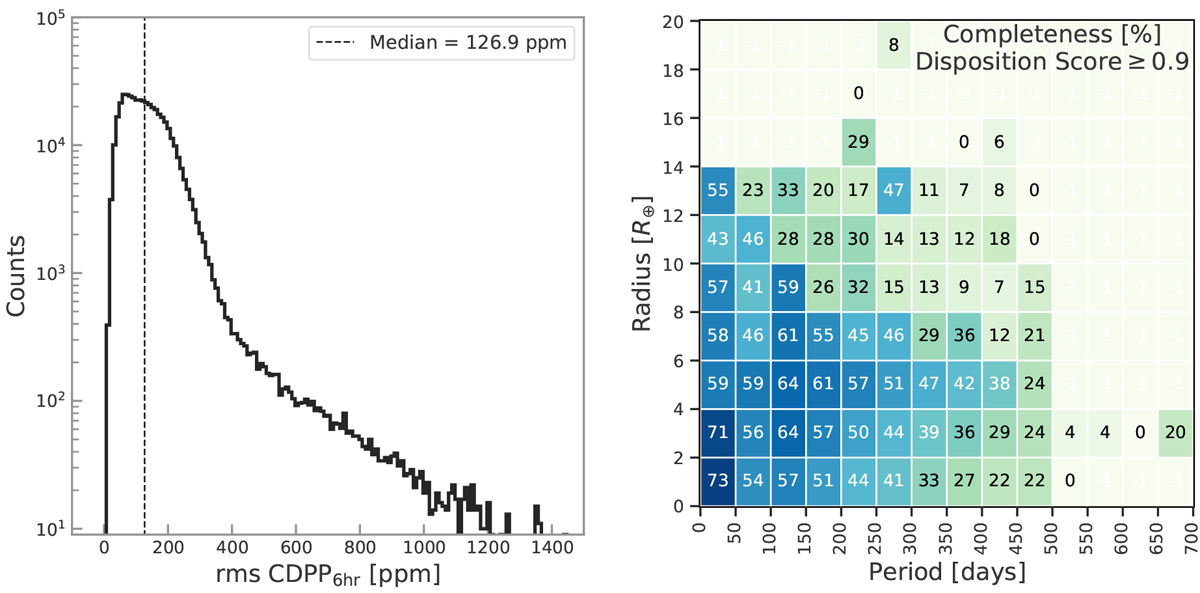Fig. C.2

Download original image
Inputs required by KOBE to simulate the Kepler transit survey. Left: Distribution of stellar noise, rms CDPP6 h, as seen by Kepler for FGK solar-type stars. Each individual KOBE system is assigned a CDPP value from this distribution. Right: Two-dimensional histogram depicting completeness of Kepler’s Robovetter, as calculated by KOBE-Vetter. To emulatehigh reliability, a disposition score cut-off is placed. Labels on each bin indicate the completeness (in %) for that bin. This calculation is based on the injected transit signals (Coughlin 2017). Completeness is not calculated for bins with less than ten injected signals (not labelled). These bins are assigned a completeness of 0%.
Current usage metrics show cumulative count of Article Views (full-text article views including HTML views, PDF and ePub downloads, according to the available data) and Abstracts Views on Vision4Press platform.
Data correspond to usage on the plateform after 2015. The current usage metrics is available 48-96 hours after online publication and is updated daily on week days.
Initial download of the metrics may take a while.


